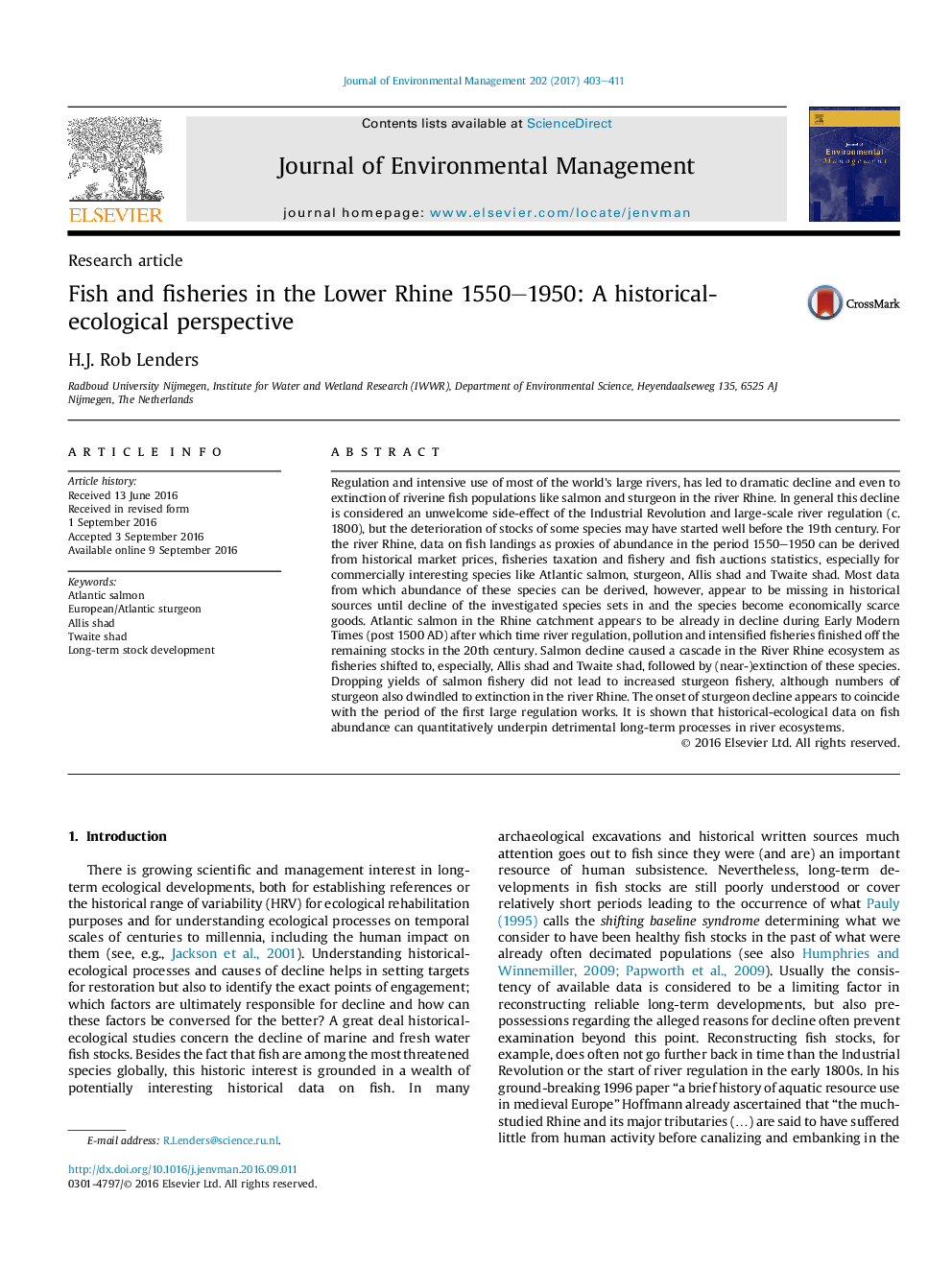| کد مقاله | کد نشریه | سال انتشار | مقاله انگلیسی | نسخه تمام متن |
|---|---|---|---|---|
| 5116406 | 1378096 | 2017 | 9 صفحه PDF | دانلود رایگان |
- Rhine salmon was already in decline in early Modern Times.
- Allis shad subsequently declined due to increased fishery in the late 19th century.
- Next, fishery shifted to Twaite shad which led to decline of this species.
- Sturgeon became extinct because of 18th century large river regulation works.
- Riverine fish suffered partially from an exploitation cascade for several centuries.
Regulation and intensive use of most of the world's large rivers, has led to dramatic decline and even to extinction of riverine fish populations like salmon and sturgeon in the river Rhine. In general this decline is considered an unwelcome side-effect of the Industrial Revolution and large-scale river regulation (c. 1800), but the deterioration of stocks of some species may have started well before the 19th century. For the river Rhine, data on fish landings as proxies of abundance in the period 1550-1950 can be derived from historical market prices, fisheries taxation and fishery and fish auctions statistics, especially for commercially interesting species like Atlantic salmon, sturgeon, Allis shad and Twaite shad. Most data from which abundance of these species can be derived, however, appear to be missing in historical sources until decline of the investigated species sets in and the species become economically scarce goods. Atlantic salmon in the Rhine catchment appears to be already in decline during Early Modern Times (post 1500 AD) after which time river regulation, pollution and intensified fisheries finished off the remaining stocks in the 20th century. Salmon decline caused a cascade in the River Rhine ecosystem as fisheries shifted to, especially, Allis shad and Twaite shad, followed by (near-)extinction of these species. Dropping yields of salmon fishery did not lead to increased sturgeon fishery, although numbers of sturgeon also dwindled to extinction in the river Rhine. The onset of sturgeon decline appears to coincide with the period of the first large regulation works. It is shown that historical-ecological data on fish abundance can quantitatively underpin detrimental long-term processes in river ecosystems.
Journal: Journal of Environmental Management - Volume 202, Part 2, 1 November 2017, Pages 403-411
